TABLE OF CONTENTS
As Nvidia continues to expand its presence on the GPU market, the company has started to split its offers into several lines.
This can lead to confusion among users that don’t keep up with recent developments in that corner of the tech market, and it’s not rare to see people wondering what exactly terms like GTX and RTX stand for in Nvidia’s GPU Line-up, and which ones they should focus on.
In the most general sense, RTX is the newest line of cards by the company, and the one that it’s actively focused on right now.
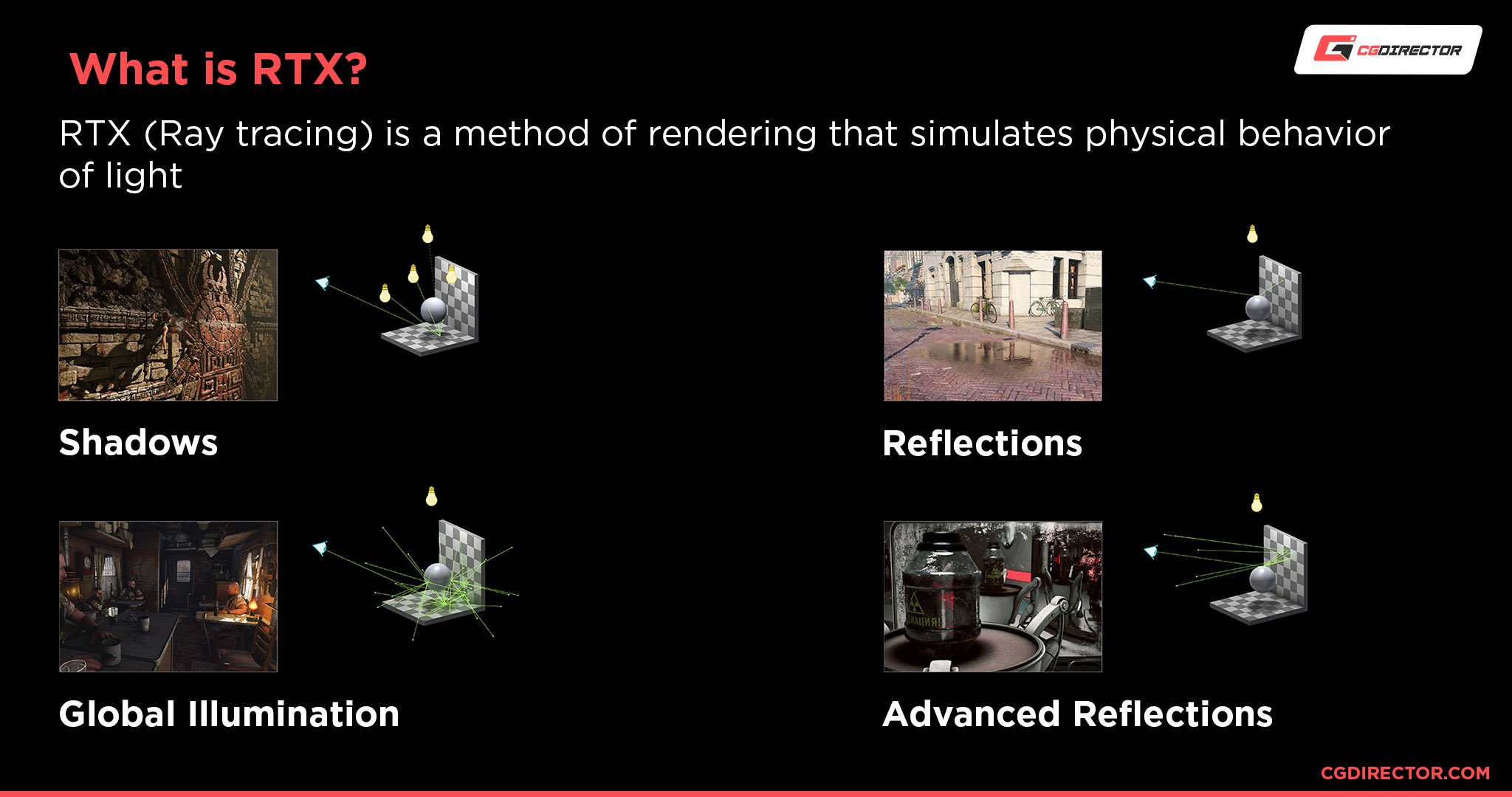
The name technically refers to the cards’ raytracing capabilities, though it’s more a marketing term that signifies the next major era in Nvidia’s lineup.
Meaning of GTX and History of the Line
Nvidia’s GTX cards have been around for over a decade now, and they have a well-established presence on the market.
The name is an abbreviation for “Giga Texel Shader eXtreme”, though this does not refer to any actual technical capabilities, and is more of a marketing term, like the RTX line.
GTX cards were originally introduced as the higher-end counterparts to certain GT models – for example, the 8800 GTX and 8800 GT. There were also models with the marketing term GTS (Giga Texel Shader), where GTX is most likely derived from.
Eventually, the company started to focus on GTX cards exclusively as their main line of products, with entries as low as GTX 260, and going all the way up to the premium GTX 1080.
Later on, the Ti (Titanium) edition was released, with certain cards like the GTX 1070 and 1080 getting that upgrade.
RTX: What Does It Mean, and What Does Ray Tracing Bring to the Table?
Nvidia RTX is a more recent line of cards that were introduced in 2019 with the 20 series.
RTX is another marketing abbreviation, meaning “Ray Tracing Texel eXtreme”, and, as the name implies, these cards were the first to introduce some dedicated ray tracing capabilities.
The 20 series was initially quite expensive, drawing some criticism from reviewers despite the cards’ solid performance and general capabilities. It wasn’t until the introduction of the 30 series that prices went down to a more affordable level.
However, that was only temporary, as external factors forced the average market prices to unprecedented high levels.
This situation is still ongoing, and it’s challenging to procure a modern GPU at a reasonable price at the moment.
According to some experts, this could last for a couple more years too. More on that below.
Benefits of Upgrading from a GTX to an RTX Card
The main difference between the GTX and RTX lines is in the cards’ real-time ray tracing capabilities.
RTX cards have advanced capabilities for that built-in, making them more attractive for advanced users and heavy gamers.
However, on a more general level, upgrading from GTX to RTX is simply about raw performance.
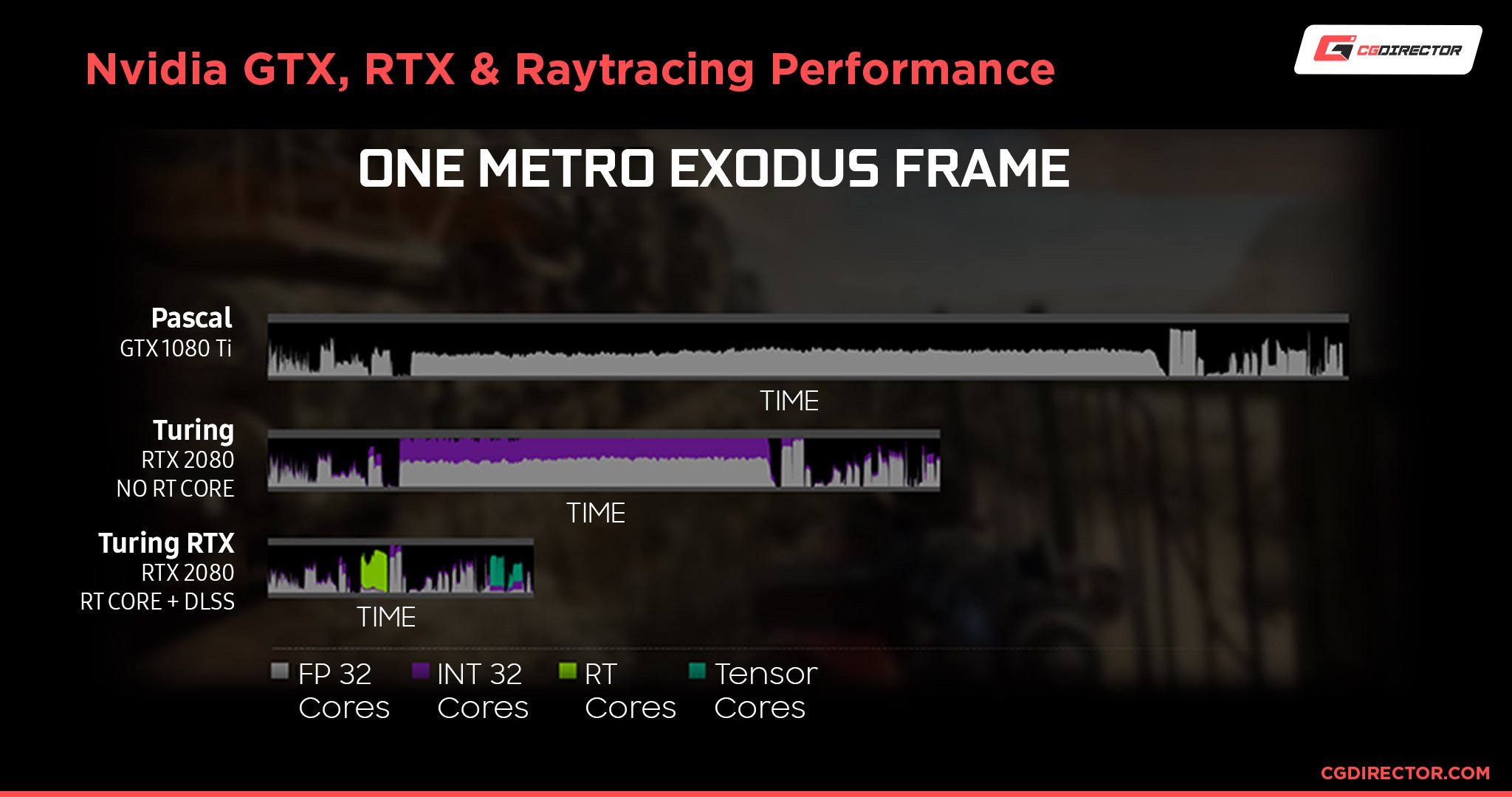
Those who don’t specifically need ray tracing will still benefit from improved rendering times, extra VRAM, and additional CUDA cores.
In addition, RTX cards are the current main focus of Nvidia. This means that new drivers are typically optimized for them specifically, so you’re going to get the biggest advantages over time if you upgrade to an RTX card at the moment.
The same goes for technical support. It’s easier to get assistance for issues in the RTX line at the moment, both on the software and hardware side.
The only exception to this rule are repairs that require replacement parts. Due to the current global chip shortage, this could be more difficult for an RTX card compared to a GTX one.
Those purchasing large volumes of cards for professional uses should definitely consult a specialist before investing in a particular model, and familiarize themselves with the current situation on the maintenance side.
In some cases, it can be wiser to invest in an older line of cards if it means better affordability of repair procedures in the long run.
Popular workloads for Nvidia GPUs
Nvidia’s GPUs remain a popular choice among professionals in various fields and gamers alike.
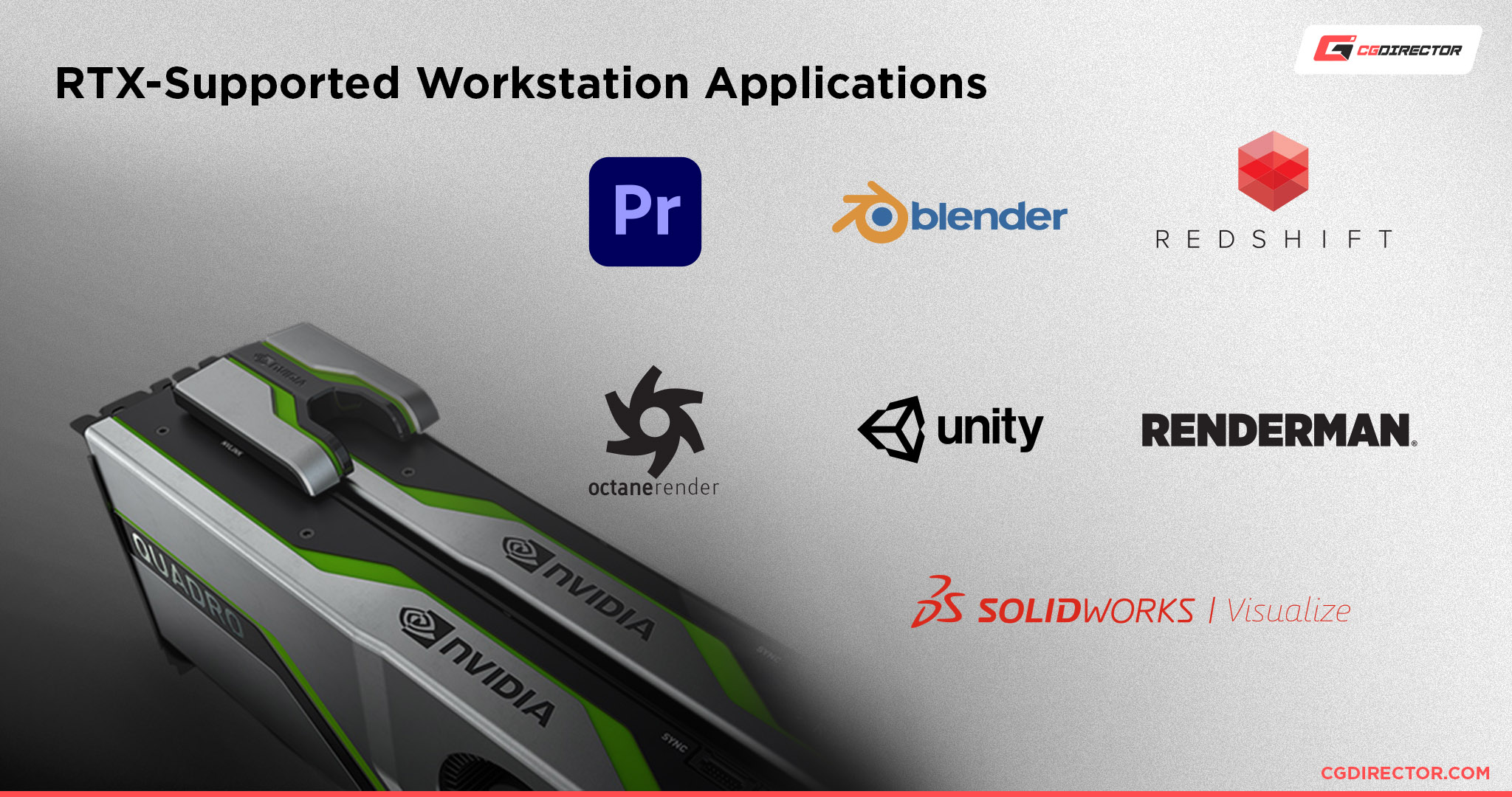
While AMD has started to step up their game too, and has some attractive offers on its own side, Nvidia’s RTX line remains hard to beat when it comes to cutting-edge ray tracing performance.
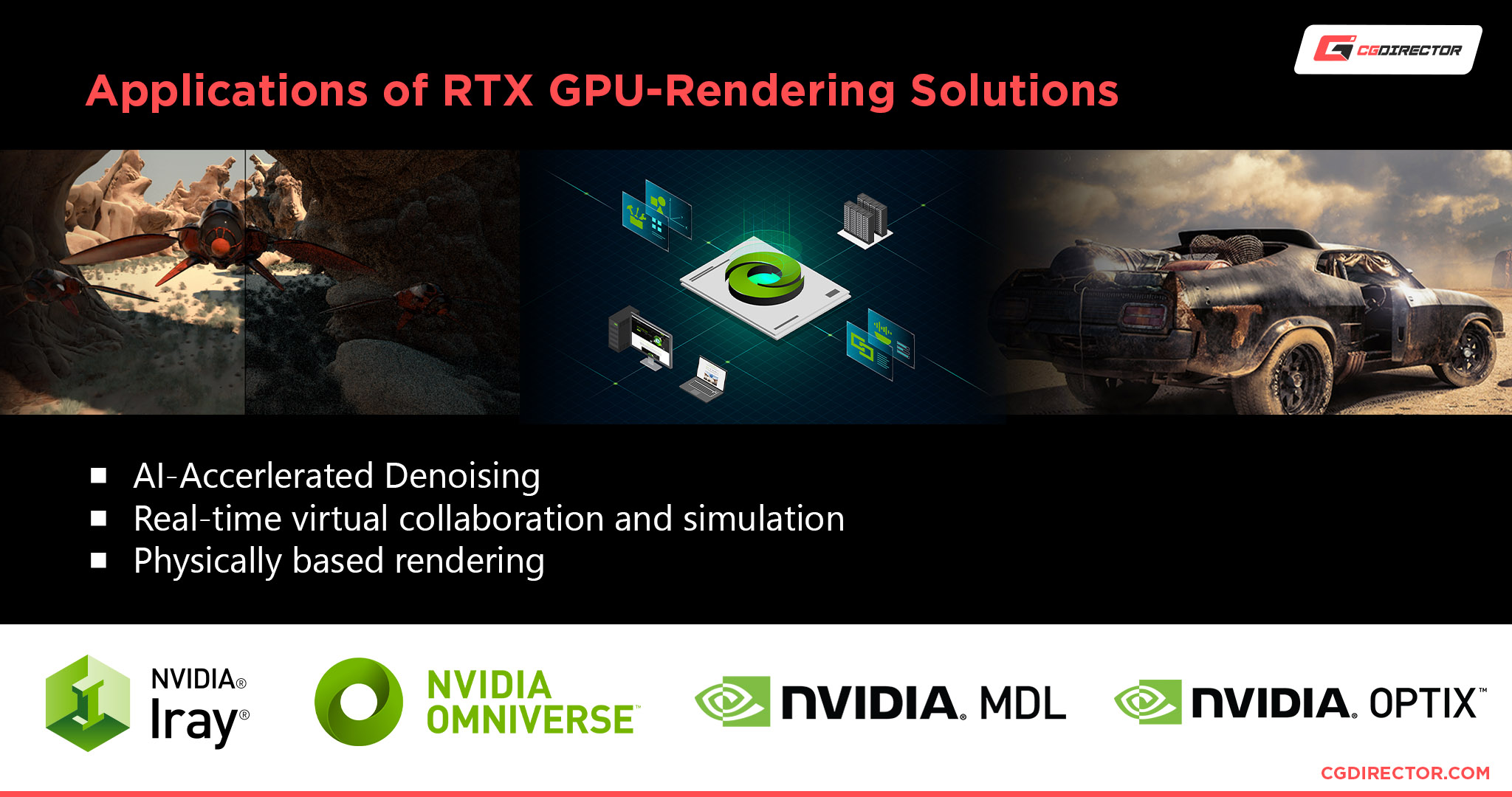
3D Modeling and Animation
Rendering times in professional 3D modeling and animation suites, like 3DS Max, Maya, Cinema 4D and Blender, enjoy a significant improvement with the help of an RTX card.
Since the lighting algorithms used by most of the popular rendering engines on the market at the moment rely on ray tracing (or variants of it), adding hardware with built-in ray tracing capabilities provides a huge boost.
The difference is especially noticeable in animation work, as reducing the render time for a single frame by more than 50% can have a stacking effect on the rendering of entire videos.
Interior and Architectural Design
On a similar note, RTX cards can greatly improve architectural visualizations.
While geometry and layout are obviously the main focus here, lighting also plays a major role in getting the right message across.
The ability to preview lighting changes more quickly and accurately can improve the workflow of professionals in the field by a noticeable margin, and can make it easier to work with suites like ArchiCAD and SketchUp.
Video Editing
Modern video editing software like Premiere Pro and Davinci Resolve usually leverages hardware acceleration.
This means that exporting videos works much faster with an RTX card as opposed to an older GTX one.
This depends on the kind of compression and other settings used in the project, of course.
There are certain configurations in which hardware acceleration will make little difference.
Machine Learning
Machine learning is a very popular field in the last decade, and it’s closely tied to powerful video hardware.
The algorithms used in modern machine learning can leverage certain computational capabilities of modern GPUs, mostly with regards to parallel operations and floating point calculations.
Some machine learning platforms can also utilize Nvidia’s CUDA, a platform available in their higher-end modern GPUs.
Cryptocurrency Mining
Some cryptocurrencies like Bitcoin also utilize GPUs for their mining.
This has been a controversial topic in recent years, as crypto miners have been a major contributing factor to the global GPU shortage, according to reports.
For this reason, many modern cryptocurrencies are trying to move away from GPU mining.
However, Bitcoin remains the most popular currency on this market, meaning that the popularity of GPU miners will likely not go down anytime soon.
Gaming
Gamers are also a major target audience for RTX cards.
It’s arguable how much a gamer can benefit from investing in an RTX GPU right now, however, as not many games on the market support ray tracing yet.
And those that do typically utilize it for things like slightly more realistic sunlight and reflections.
Other than a few rare cases of games implementing 100% ray-traced lighting, it’s mostly a gimmick right now.
Buying Nvidia GPUs during Chip Shortages
Buying a new Nvidia GPU can be very difficult at times due to global chip shortages. Depending on the stores and availability in your country, this can become a serious issue.
Such situations are the result of several factors:
- Global events that impact the productional capabilities of major chip manufacturers
- Scalpers buying out available stock of newly-released GPUs
- Cryptocurrency miners trying to buy as much as they can for themselves
Reports indicate such situations could very well last for a couple of years until production speeds pick back up.
In such situations, cards in the RTX line cost as much as 50% more than their original launch price.
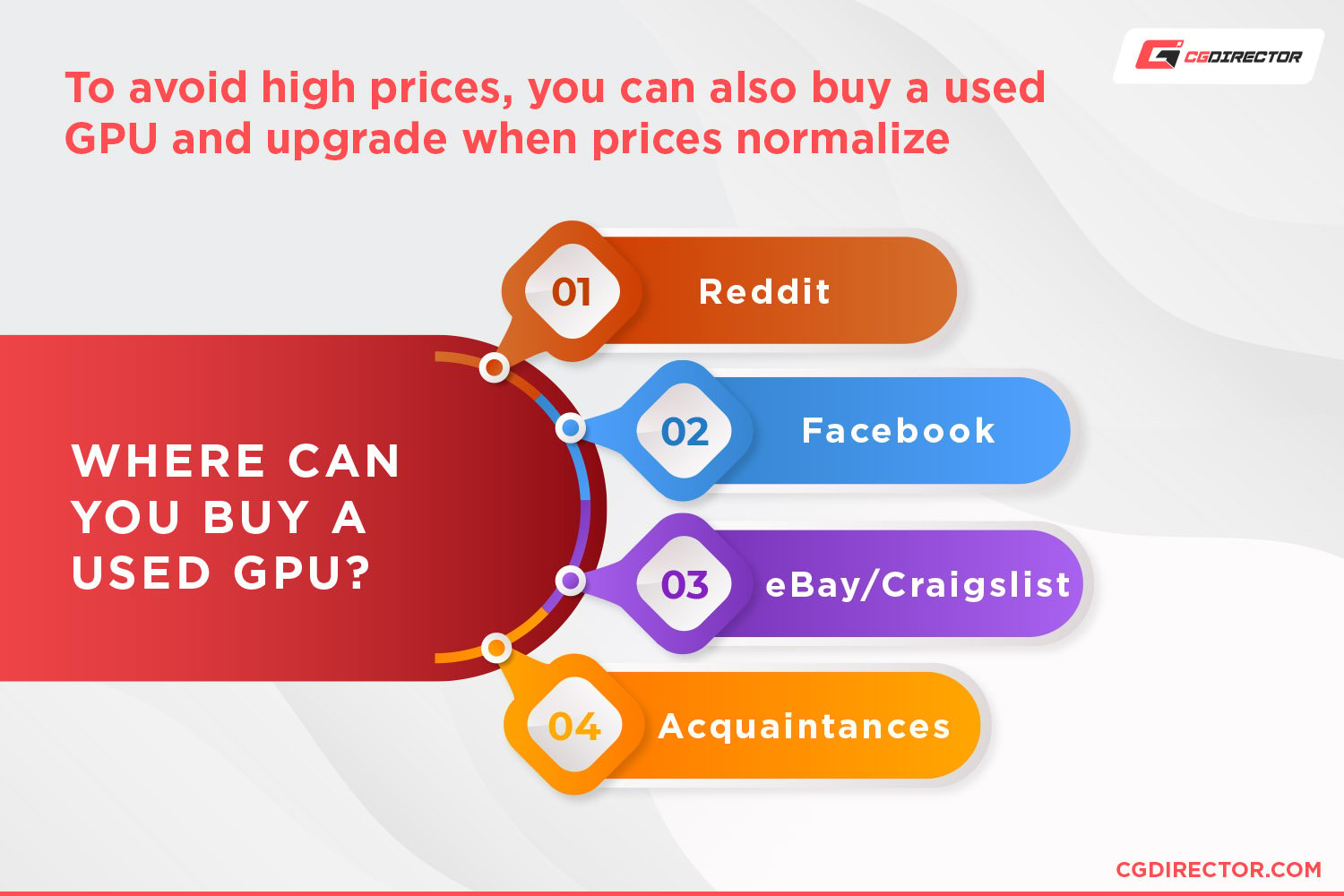
In some markets, certain models cost upwards of 100% more.
Some have been able to circumvent shortages by purchasing pre-built computers, keeping the GPU, and selling the rest of the parts.
Due to the way pricing for pre-built computers works in some markets, this can actually be a lucrative venture.
However, it’s a short-lived one at best.
FAQ
Is an RTX card strictly required for real-time ray tracing?
For most modern applications and games, yes.
There are some GTX cards that received certain features from the RTX line after the latter was launched, but this is typically restricted to the highest end of the line, and even then the range of features is quite limited compared to what an RTX card offers out of the box.
Performance will be significantly downgraded compared to running an RTX card too.
Is it a good idea to buy an RTX card right now?
Unless you specifically need an RTX card for a specific purpose, it’s probably best to wait a few months and see how things are going to develop around the current shortage.
It’s possible that the main bottlenecks will be unblocked after a short while, but it’s also possible that prices are going to keep going up for the foreseeable future.
Are new RTX cards coming out soon?
Given the recent launch of the 30 series, and the current global manufacturing situation, it’s highly unlikely that we’re going to see any major new entries in the line soon.
At best, it’s possible that Nvidia might decide to release additional budget models, but users shouldn’t expect anything beyond that.
Is GTX or RTX a faster GPU?
RTX GPUs are faster across the board.
The only exception might be the more recently released RTX 3060, which is considered the budget entry of the new line, and features performance nearly identical to that of the GTX 1080.
Other than that, upgrading to a 3070 already brings a huge performance boost compared to anything available in the GTX line.
Conclusion
GTX, RTX and older GT and GTS abbreviations in Graphics Cards Models are mostly marketing speak to differentiate between GPU Line-ups.
Over to you
What GPU are you thinking of buying? Let us know in the comments or our expert forum!
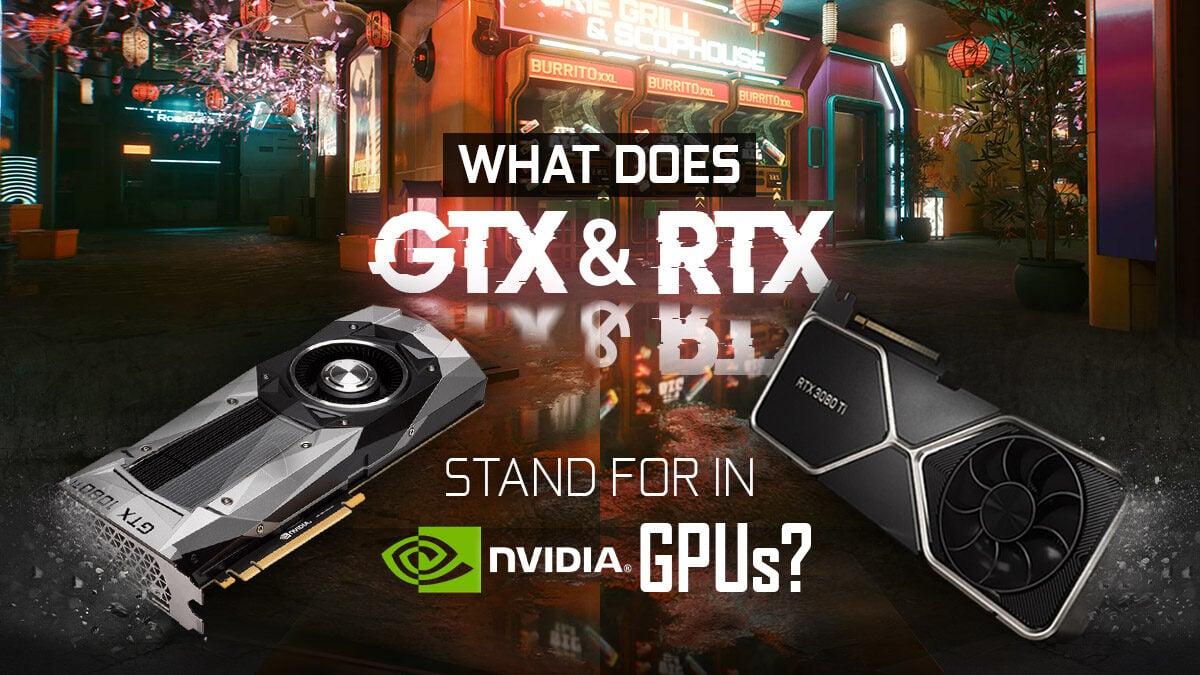
![Can You Run Two Different GPUs in One PC? [Mixing NVIDIA and AMD GPUs] Can You Run Two Different GPUs in One PC? [Mixing NVIDIA and AMD GPUs]](https://www.cgdirector.com/wp-content/uploads/media/2023/03/Can-You-Run-Two-Different-GPUs-in-One-PC-Mixing-NVIDIA-and-AMD-GPU-Twitter-594x335.jpg)
![Is the Nvidia RTX 4090 and 4080 Worth it for Content Creators? [3D Rendering, Video Editing & More] Is the Nvidia RTX 4090 and 4080 Worth it for Content Creators? [3D Rendering, Video Editing & More]](https://www.cgdirector.com/wp-content/uploads/media/2022/10/Nvidia-RTX-4000-Launch-Worth-it-for-Content-Creators-Twitter-594x335.jpg)
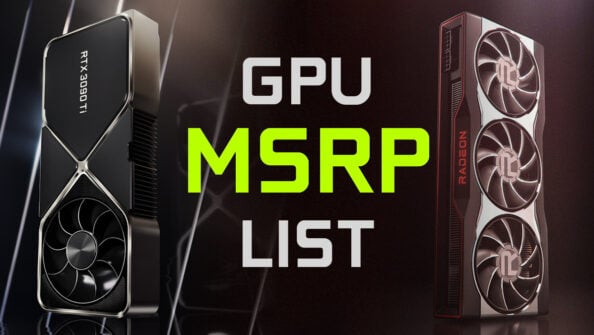
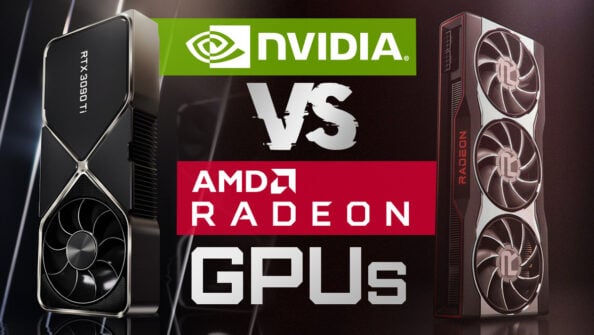

1 comment
14 September, 2023
where do you get the parts to build a computer?